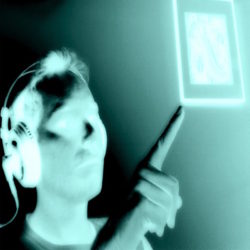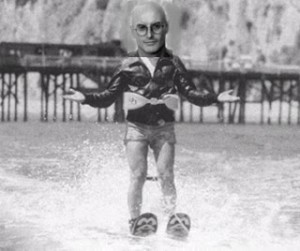[Crossposted @ Integral Health Resources.com]
The Society for Humanistic Psychology blog posted the following video of Erich Fromm being interviewed by Mike Wallace in 1958. [A complete transcript of the interview can be accessed via the Harry Ransom Center (University of Texas at Austin) website.] A couple of things stuck me as I watched this fascinating exchange. First, Fromm’s essential critique of modern society is as relevant today as it was fifty years ago. Second, I find it difficult to imagine any news program today featuring this kind of in-depth, philosophical discussion. We’ll see weeks of non-stop news coverage on say, the death of Michael Jackson, but when it comes to exchanging thoughtful perspectives on our most pressing societal problems, we’re offered little more than partisan sound-bites and propaganda disguised as journalism.
The program below is introduced as a “Special series discussing the problems of survival and freedom in America”. Mike Wallace begins by saying that his aim in talking with Fromm is to “try to measure the impact of our free society on us as individuals. Whether we’re as happy as we like to think we are, or as free to think and to feel.” Imagine Bill O’Reilly or Brian Williams or Katie Couric devoting an entire program to such questions! These kinds of questions are incredibly important, yet conspicuously absent from public discourse. In terms of Integral Health, it is simply impossible to understand individual health and happiness without understanding the way our individual lives are shaped by societal forces.
During the discussion, Fromm talks about the “marketing orientation” of the American citizenry of the 1950s: “Our main way of relating ourselves to others is like things relate themselves to things on the market. We want to exchange our own personality – or as one says sometimes, our ‘personality package’ – for something.” Fromm (I’m paraphrasing here) goes on to describe modern social relationships as shallow, with real intimacy being hidden by a superficial friendliness. He suggests that the average American is only genuinely concerned with private affairs, never losing sleep about the pressing societal problems which threaten our very existence. He says the average person prefers to leave such things to specialists in the government, talking about problems shown on the news with friends and coworkers, but with no more sense of urgency than one would talk about a car that needs repair. Fromm asserts that, despite our apparent preoccupation with it, true love remains a relatively rare phenomenon. He laments that it is all too common that the most important things we talk about on Sundays are the very things that we pay relatively little attention to in our everyday lives. Again, he’s talking about life in the 1950s, but it’s easy to be struck with how little things have changed, at least in many respects. Like when he says: “I think our danger is that we talk one thing, and we feel and act another thing. I mean, we talk about equality, about happiness, about freedom – and about the spiritual values of religion, and about God – and in our daily life, we act on principles which are different, and partly contradictory.”
Speaking of the “religious renaissance” he was seeing back then, Fromm describes it as “the greatest danger that true religious experience has ever been confronted with.” He goes on to say that man today, being concerned with production and consumption as ends in themselves, has very little energy and time to devote himself to the true religious experience, which Fromm defines (in response to Wallace) as “the capacity to feel deep love and oneness with others and nature.” Wallace also asks Fromm to define “happiness” and “democracy”. Regarding happiness, Fromm offers: “People today seem to define happiness as the experience of unlimited consumption. Happiness should be something which results from the creative, genuine, intense relatedness – awareness, responsiveness, to everything in life – to man, to nature.” Regarding democracy he says: “Democracy once meant an organizational society and a state, in which the individual citizen is – feels – responsible, and acts responsibly, and participates in decision-making. I think what democracy means today, in reality, is to a large extent, manipulated consent – not forced consent, manipulated consent -and manipulated more and more with the help of Madison Avenue.” Fromm adds, “We have a mass man, a mass bureaucracy, a manipulation of everyone to act smoothly but with an illusion that he follows his own decisions and opinions.”
Fromm gives Wallace–and the people watching this ABC News Special–a lot to chew on. Again, I think many of Fromm’s concerns and observations are just as relevant today as they were fifty years ago. Without further ado:


